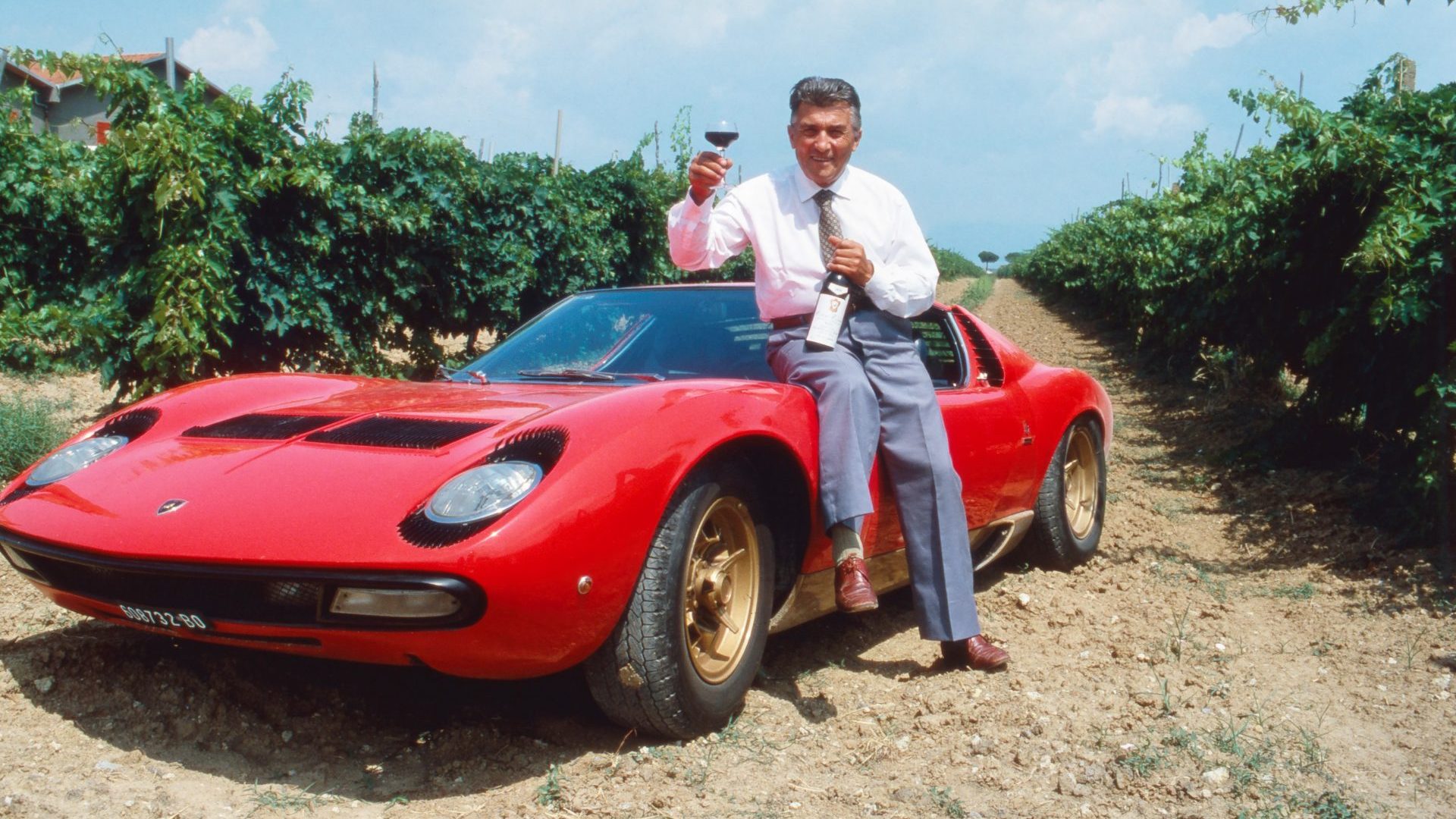By 1963, Ferruccio Lamborghini was already one of Italy’s biggest postwar success stories – and he had yet to produce a single high-performance car.
Having returned from his military service as a mechanic to a rubble-strewn
country ravaged by conflict and struggling to provide its people with even basic foodstuffs, Lamborghini began hoarding scrap metal and parts scavenged from the detritus of war to build tractors that were affordable and reliable. He marketed the machines by staging tugs-of-war with other tractors in village squares. His first run of 11 tractors was snapped up, and
such was the interest that his father agreed to use the family farm as collateral to buy 1,000 engines and open a factory.
The machines were a godsend for Italian agriculture; the Lamborghini Trattori manufacturing plant near Bergamo could barely keep up with
demand. He subsequently branched out into the manufacture of industrial heaters and air-conditioning units, and by the late 1950s Lamborghini was a wealthy man.
With success came the trappings of success, and Lamborghini’s passion was
fast cars. He’d even competed in the 1948 Mille Miglia, a gruelling 1,000-mile road race through northern Italy that tested the best drivers in the world, driving a standard Fiat 500 Topolino he had turned into a finely tuned racing car with a powerful engine. Nearly 700 miles into the race, however, speeding through the village of Fiano, near Turin, Lamborghini lost control for a split second, hit the kerb and crashed into a restaurant.
“I finished off my Mille Miglia in an inn,” he would drily recall, “which I
entered by driving through a wall.”
The incident put Lamborghini off racing for life but extinguished neither the thrill he experienced from speed nor the appreciation he had for high-end sports car design. As his businesses thrived he was able to indulge his hobby, acquiring a Mercedes-Benz 300SL, a Jaguar E-Type, two Maseratis and a string of Ferraris.
The Ferraris became his favourite, the vehicles in which he would impress clients by picking them up in one and driving them to his office to sign new contracts. Frustratingly, however, he found himself burning through clutch after clutch, necessitating repeated trips to the Ferrari factory at Maranello for replacements.
Eventually, after yet another tow back to his garage, he asked one of his own
mechanics to take a look, who, having disassembled the transmission and the engine, discovered that the clutch cables Lamborghini used for tractors worked better than those Ferrari insisted on fitting at great expense.
Keen for an explanation, a disgruntled Lamborghini decided to quiz Enzo Ferrari himself. One spring day in 1963 he parked outside Ferrari’s Maranello offices and asked to speak to the man in charge.
When Ferrari eventually appeared and gruffly ushered Lamborghini into his
office, their meeting – it’s fair to say – did not go well. When the aggrieved vehicle owner explained about the constantly failing clutch on his car and how he’d eventually replaced it himself at a fraction of the cost, Ferrari’s response was to show Lamborghini the door with a terse invitation to stick to tractors and leave the sports cars to him.
As well as being a questionable customer-service strategy, Ferrari’s response would ultimately transform the world of high-performance cars.
Within a year, the insulted Lamborghini had employed former Ferrari designer Giotto Bizzarrini and unveiled the sleek 3.5 litre, 12-cylinder Lamborghini GT350 at a show in Geneva to great acclaim. In 1967 the Miura went into production, arguably the finest Lamborghini of them all, a model bought by the Shah of Persia, Grace Kelly and Frank Sinatra, the singer’s car coming with bespoke leopard-skin interiors.
“It was the first car of our wildest dreams, a car for absolute fanatics,” Lamborghini said in 1984. “We refused to make a single technical compromise in the Miura… As for its appearance, you can judge for yourself.”
While most sports cars of the day were primarily racing cars adapted for use on the roads, Lamborghini’s abrupt ending to his 1948 Mille Miglia led him to prioritise everyday driveability above all else. He never formed a Lamborghini racing team nor had any association with motor racing. It was a dangerous sport, he said, one he would not want his son to take up, which would have been inevitable had he produced cars for racing.
By the time the Miura rolled off the production line, Lamborghini had, in the
space of two decades, transformed himself from a farmer’s son who bashed
together tractors from discarded Panzers to the brains behind some of the most popular and exclusive sports cars ever designed, tweaking the nose of the great Enzo Ferrari himself along the way.
Lamborghini was raised far from the world of luxury cars. He was born into a farming family in a village near Ferrara and was expected to take over the
business, but it was always the agricultural machinery rather than the land itself that fascinated the young Ferruccio. Having briefly apprenticed as a blacksmith he finally persuaded his family that farm life was not for him and moved to Bologna, where he qualified as a mechanic and worked at a series of garages. In 1940, at the age of 24, he was conscripted into the Italian military and posted to Rhodes where he soon developed an impressive reputation for keeping the most burned-out, damaged and mistreated military vehicles on the road.
“My ability was largely due to having been the first person on the island to
receive the repair manuals,” he said, “which I memorised and then destroyed so as to become indispensable.”
The ebb and flow of the war saw Lamborghini gain experience on a range
of vehicles, first with the Italian army, then when the Germans invaded in 1943 and finally with the liberating British forces until he was allowed to leave Rhodes in 1946.
He opened a garage in Bologna, where as well as his racing exploits he witnessed the struggles of Italian agriculture to recover from wartime hardships for want of modern equipment. Noting the abandoned military hardware still littering the countryside, he set about designing and building his Carioca tractors, a path that would eventually lead to Ferrari’s door and a subsequent reputation for some of the world’s most desirable and drivable high-performance cars.
After the introduction of the Countach in 1974, the fallout from the 1973 oil crisis saw Lamborghini sell his interests in the company and decamp to a vast estate in Umbria, where he designed a golf course and set about producing a red wine called Sangue di Mira, (Blood of the Miura). The winery is now run by his daughter Patrizia, who Ferruccio fathered at the age of 58, 18 years before his death in 1993. His son Tonino, whose mother Clelia Monti died in childbirth in 1947, runs a luxury goods empire based on his famous surname.
Popular as the Countach proved, the Miura remained Ferruccio’s proudest
achievement. In 1971 he said that if Jacqueline Onassis, arguably the most
famous woman in the world at the time, sat behind the wheel of a Miura: “You would look at the car, not her”.
As Miura owner Frank Sinatra put it, “You buy a Ferrari when you want to be
somebody. You buy a Lamborghini when you are”.




